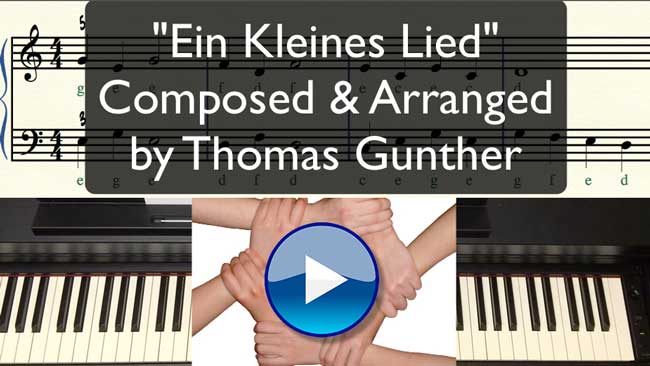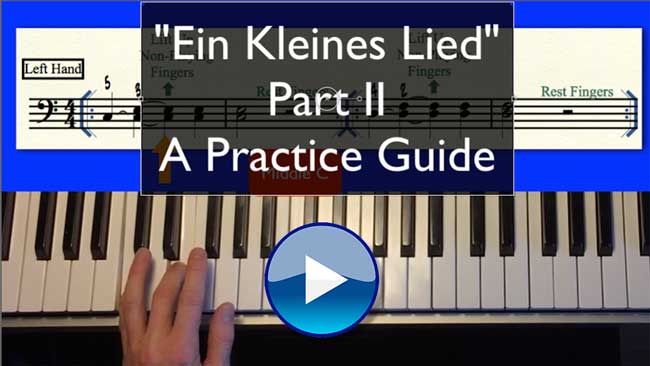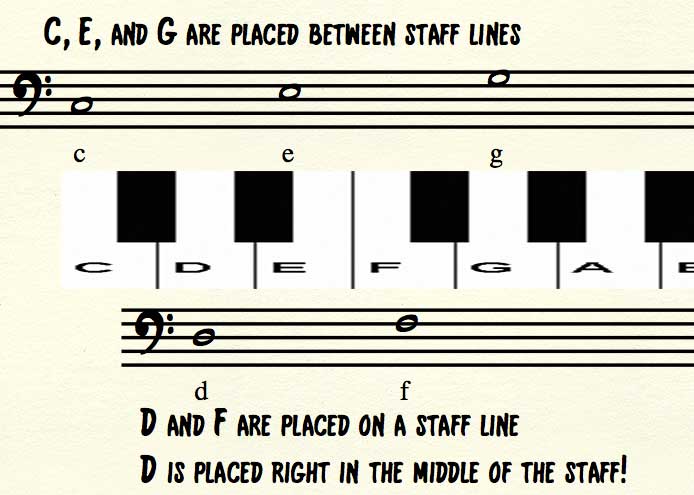How to practice and play “Ein Kleines Lied”
This post is about my song “Ein Kleines Lied”, which I composed and arranged specifically for my younger pupils.
This song was arranged for 6 hands. The three different parts are intended to be performed by three players simultaneously.
Ideally each pupil learns how to play all three parts.
The video below explains each part and shows how to perform them.
The video below is a practice guide that also explains the bass clef. You may want to read on before watching this video.
Page 1 features the melody in the right-hand with a species counterpoint accompaniment in the left. I excluded the fingering, because I want the children to learn how to read musical notes. Otherwise all they do is read the numbers that indicate which finger to use for a particular note.
What the child will learn from practicing the song “Ein Kleines Lied”
Reading bass clef
The base clef is also called F clef, because it shows us the position of the pitch F3 on the staff.
It is important that the children associate the location of the note-heads on the staff (Staff Lines) with the pitch name, and the keys.
So far we learned the location of the notes C3, D3, E3, F3 and G3 written in bass clef (as shown above). These are the notes I used in “Ein Kleines Lied”.
The Grand Staff
Piano music is generally written on a grand staff. A grant staff consists of two staves, the upper one being the treble clef staff, the lower one being the bass clef staff (in most cases).
For this reason pianists have to be able to read treble and bass clef at the same time. To complicate matter even further, each clef may feature chords (Mehrklänge), which consist of several notes being played simultaneously. Consequently, sight-reading requires a lot of brain power. It’s an excellent exercise to increase our visual memory.
The two accompaniments (Begleitung 1, Begleitung 2) from the second page of “Ein Kleines Lied” feature thirds. Playing two notes in one hand at the same time can be very challenging at first.
I created pre-exercises that should prepare the pupil to perform thirds more easily. Please watch the video tutorial below.
It is very important that the child practices these finger exercises slowly and with great focus. It is much better to do these exercises often, and in short intervals (5-10 minutes most), instead of once a week for 2 hours.
Ask your child never to stop practicing when it feels pain or discomfort.





